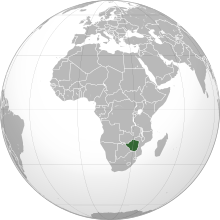A mining accident is an accident that occurs during the process of mining minerals or metals. Thousands of miners die from mining accidents each year, especially from underground coal mining, although accidents also occur in hard rock mining. Coal mining is considered much more hazardous than hard rock mining due to flat-lying rock strata, generally incompetent rock, the presence of methane gas, and coal dust. Most of the deaths these days occur in developing countries, and rural parts of developed countries where safety measures are not practiced as fully. A mining disaster is an incident where there are five or more fatalities.
Hwange, originally known as Wankie, is a town in Zimbabwe, located in Hwange District, in Matabeleland North Province, in northwestern Zimbabwe, close to the international borders with Botswana and Zambia. It lies approximately 100 kilometres (62 mi), by road, southeast of Victoria Falls, the nearest large city. The town lies on the railway line from Bulawayo, Zimbabwe's second-largest city, to Victoria Falls. Hwange sits at an elevation of 770 metres (2,530 ft), above sea level.
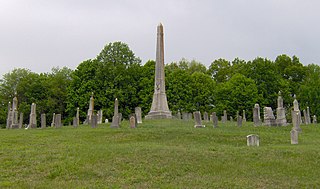
The Fraterville Mine disaster was a coal mine explosion that occurred on May 19, 1902 near the community of Fraterville, in the U.S. state of Tennessee. Official records state that 216 miners died as a result of the explosion, from either its initial blast or from the after-effects, making it the worst mining disaster in the United State's history. However, locals claim that the true number of deaths is greater than this because many miners were unregistered and multiple bodies were not identified. The cause of the explosion was likely ignition of methane gas which had built up after leaking from an adjacent unventilated mine.
New Waterford is an urban community in the Cape Breton Regional Municipality of Nova Scotia, Canada.
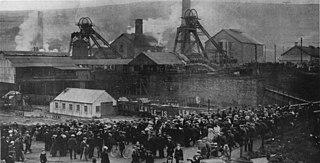
The Senghenydd colliery disaster, also known as the Senghenydd explosion, occurred at the Universal Colliery in Senghenydd, near Caerphilly, Glamorgan, Wales, on 14 October 1913. The explosion, which killed 439 miners and a rescuer, is the worst mining accident in the United Kingdom. Universal Colliery, on the South Wales Coalfield, extracted steam coal, which was much in demand. Some of the region's coal seams contained high quantities of firedamp, a highly explosive gas consisting of methane and hydrogen.

The Oaks explosion, which happened at a coal mine in West Riding of Yorkshire on 12 December 1866, remains the worst mining disaster in England. A series of explosions caused by firedamp ripped through the underground workings at the Oaks Colliery at Hoyle Mill near Stairfoot in Barnsley killing 361 miners and rescuers. It was the worst mining disaster in the United Kingdom until the 1913 Senghenydd explosion in Wales.
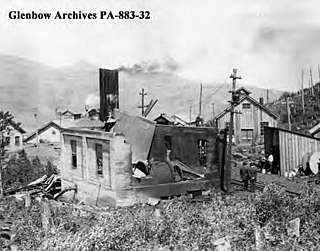
The Hillcrest mine disaster, the worst coal mining disaster in Canadian history, occurred at Hillcrest, Alberta, in the Crowsnest Pass region, on June 19, 1914, 9:30 am.

Mine rescue or mines rescue is the specialised job of rescuing miners and others who have become trapped or injured in underground mines because of mining accidents, roof falls or floods and disasters such as explosions.

The Gresford disaster occurred on 22 September 1934 at Gresford Colliery, near Wrexham, Denbighshire, when an explosion and underground fire killed 266 men. Gresford is one of Britain's worst coal mining disasters: a controversial inquiry into the disaster did not conclusively identify a cause, though evidence suggested that failures in safety procedures and poor mine management were contributory factors. Further public controversy was caused by the decision to seal the colliery's damaged sections permanently, meaning that only eleven of those who died were recovered.
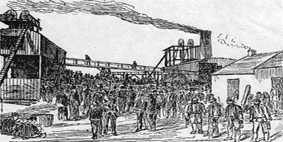
The Udston mining disaster occurred in Hamilton, Scotland on Saturday, 28 May 1887 when 73 miners died in a firedamp explosion at Udston Colliery. Caused, it is thought, by unauthorised shot firing the explosion is said to be Scotland's second worst coal mining disaster.

The Brunner Mine disaster happened at 9:30 am on Thursday 26 March 1896, when an explosion deep in the Brunner Mine, in the West Coast region of New Zealand, killed all 65 miners below ground. The Brunner Mine disaster is the deadliest mining disaster in New Zealand's history.
The Minnie Pit disaster was a coal mining accident that took place on 12 January 1918 in Halmer End, Staffordshire, in which 155 men and boys died. The disaster, which was caused by an explosion due to firedamp, is the worst ever recorded in the North Staffordshire Coalfield. An official investigation never established what caused the ignition of flammable gases in the pit.
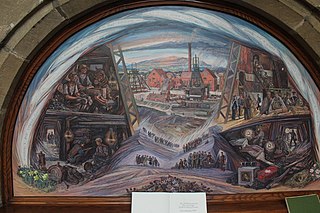
Gresford Colliery was a coal mine located a mile from the North Wales village of Gresford, near Wrexham.

Wharncliffe Woodmoor 1, 2 and 3 colliery was a coal mine that was located at the junction of Laithes Lane and Carlton Road, about 2 miles (3.2 km) north-east of Barnsley, South Yorkshire and a quarter mile east of Staincross and Mapplewell railway station, on the Great Central Railway. The branch line junction was about 200 feet (61 m) from Staincross that connected it to the colliery via a private line. The line finished up between the three main shafts and the coking ovens.
The Box Flat Mine or Box Flat Colliery was located at Swanbank in Ipswich, Queensland, Australia. The mine opened in 1969 and operated until its closure on 30 June 1987. Its coal was mined for the operation of the Swanbank Power Station.

The Lundhill Colliery explosion was a coal mining accident which took place on 19 February 1857 in Wombwell, Yorkshire, UK in which 189 men and boys aged between 10 and 59 died. It is one of the biggest industrial disasters in the country's history and it was caused by a firedamp explosion. It was the first disaster to appear on the front page of the Illustrated London News.

The Maypole Colliery disaster was a mining accident on 18 August 1908, when an underground explosion occurred at the Maypole Colliery, in Abram, near Wigan, then in the historic county of Lancashire, in North West England. The final death toll was 76.

Bentley Colliery was a coal mine in Bentley, near Doncaster in South Yorkshire, England, that operated between 1906 and 1993. In common with many other mines, it suffered disasters and accidents. The worst Bentley disaster was in 1931 when 45 miners were killed after a gas explosion. The site of the mine has been converted into a woodland.
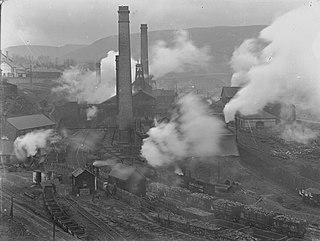
The Cymmer Colliery explosion occurred in the early morning of 15 July 1856 at the Old Pit mine of the Cymmer Colliery near Porth, Wales, operated by George Insole & Son. The underground gas explosion resulted in a "sacrifice of human life to an extent unparalleled in the history of coal mining of this country" in which 114 men and boys were killed. Thirty-five widows, ninety-two children, and other dependent relatives were left with no immediate means of support.
The 1923 Bellbird Mining Disaster took place on 1 September 1923 when there was a fire at Hetton-Bellbird coal mine, known locally as the Bellbird Colliery or mine. The coal mine was located near the village of Bellbird, which is itself three miles southwest of Cessnock in the Northern coalfields of New South Wales, Australia. The accident occurred in the No. 1 Workings of the mine and resulted in the deaths of 21 miners and their horses. Subsequently there was a thorough investigation into the causes of the accident which resulted in legislative changes that were implemented in an effort to improve worker safety in Australian coal mines. These efforts culminated with the Mines Rescue Act 1925 which established standards for mine rescue operations in New South Wales (NSW) province. At the time of the disaster the mine employed 538 people including 369 who worked underground. The accident killed 21 miners and caused legislation changes.
